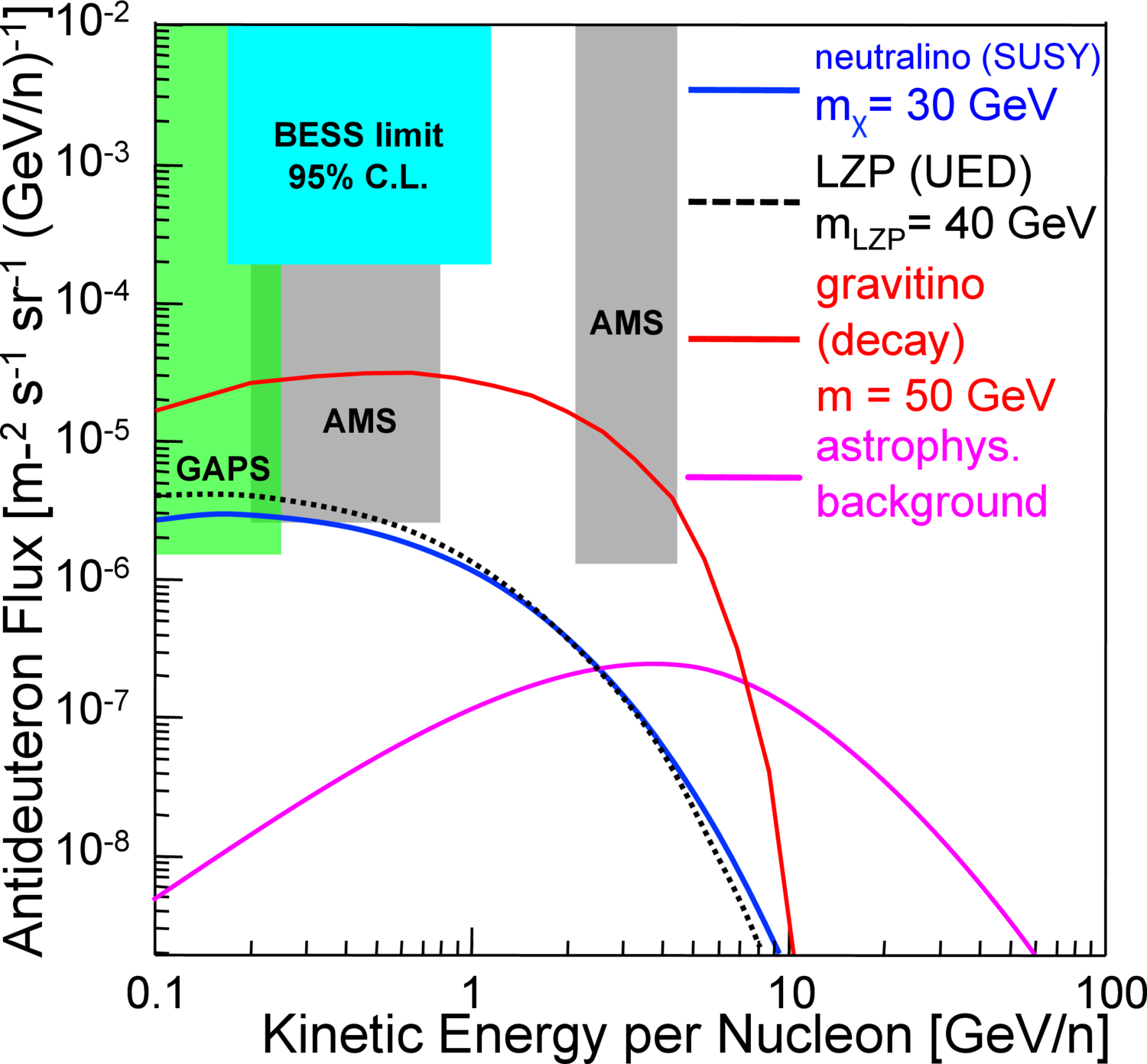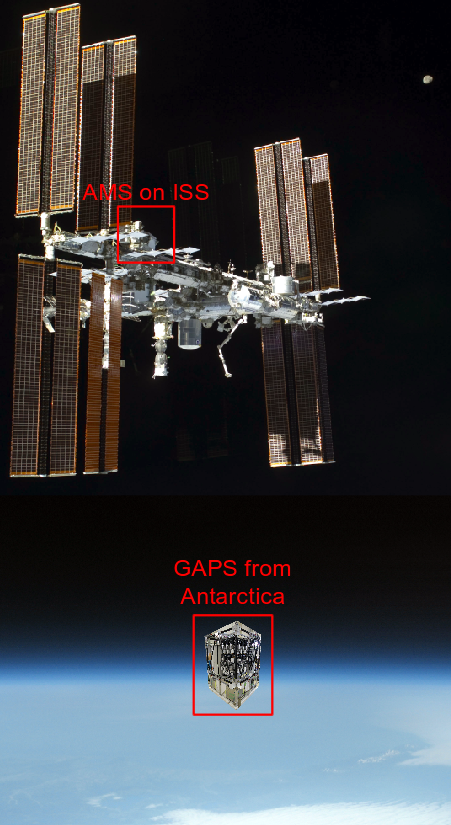|
Home Research Presentations Publications Teaching Outreach Group |
||
 Dark matter search with cosmic-ray antideuterons
Dark matter search with cosmic-ray antideuterons The existence of dark matter is proven and the investigation of its nature plays a key role in understanding structure formation after the big bang. Dark matter cannot be explained with known types of matter, therefore we are at the dawn of something significantly new. The importance of this problem becomes obvious by recalling that dark matter is more than five times more abundant than regular matter. Little is known about the nature of dark matter particles, but that they are relatively heavy, gravitationally interacting and – if at all – only very weakly with regular matter. Cosmic rays were measured by a balloon-borne experiment for the first time by Victor Hess in 1912. Since then many different high-altitude balloon experiments were carried out and measured the composition and energies of cosmic rays over large order of magnitudes. These measurements will hopefully also help to understand the dark matter puzzle.  The theoretically predicted cosmic-ray antideuteron flux resulting from secondary interactions of primary cosmic rays, e.g. protons, with the interstellar medium is very low. So far not a single cosmic
antideuteron has been detected by any experiment but well-motivated theories beyond the standard model of particle physics, e.g., supersymmetry or universal extra dimensions, contain viable dark matter
candidates which could led to a significant enhancement of the antideuteron flux due to annihilation or decay of the dark matter particles. This flux contribution is believed to be especially large at small energies which leads to a high discovery potential.
The theoretically predicted cosmic-ray antideuteron flux resulting from secondary interactions of primary cosmic rays, e.g. protons, with the interstellar medium is very low. So far not a single cosmic
antideuteron has been detected by any experiment but well-motivated theories beyond the standard model of particle physics, e.g., supersymmetry or universal extra dimensions, contain viable dark matter
candidates which could led to a significant enhancement of the antideuteron flux due to annihilation or decay of the dark matter particles. This flux contribution is believed to be especially large at small energies which leads to a high discovery potential.The main focus of my group is the first time discovery of cosmic-ray antideuterons for the identification of dark matter. We are working on the AMS-02 cosmic-ray antideuteron analysis, on the production of (anti)deuterons in proton-proton interactions with NA61/SHINE, and on the construction of the next-generation cosmic-ray antideuteron experiment GAPS. In addition, we conduct simulation studies to understand atmopsheric and geomagnetic effects on charged low-energy cosmic rays. I also organized the first cosmic-ray antideuteron workshop together with Rene Ong from UCLA, which took place during June 2014. Please visit the conference website for more details: Antideuteron 2014. The second iteration of the workshop took place in March 2019. Other activities include the organization of the 9th International workshop on Very High Energy Particle Astronomy (VHEPA), which was held in January 2016 at the University of Hawaii at Manoa. |





|
